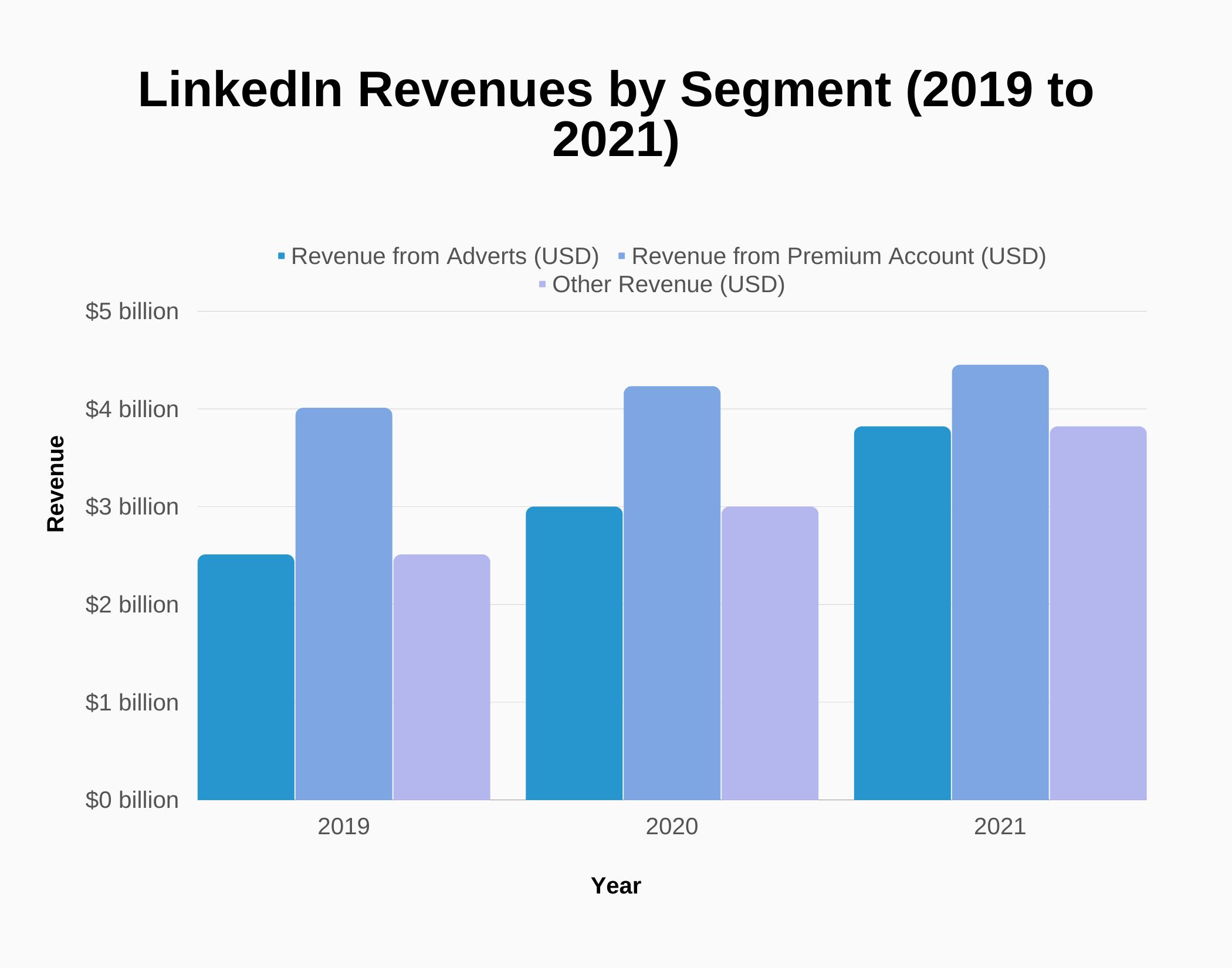LinkedIn has transformed the way professionals connect, network, and find opportunities in the job market. But have you ever wondered how this platform turns all that engagement into revenue? By diving into their diverse business model, we can uncover the strategies LinkedIn employs to generate income. From tailored services to premium subscriptions,
Understanding LinkedIn's Core Services

At the heart of LinkedIn's business model are its core services, which cater to a wide range of users from job seekers to large enterprises. Let’s break down these services in detail:
- Networking:
LinkedIn provides a platform for professionals to connect, share insights, and expand their networks. Users can send connection requests, endorse skills, and engage in discussions through comments and messages.
- Job Listings:
Employers can post job openings directly on LinkedIn, enabling job seekers to find opportunities that match their skills and experience. This service not only helps candidates but also gives companies access to a vast talent pool.
- Premium Subscriptions:
LinkedIn offers various premium subscription plans, including LinkedIn Premium and
- Recruitment Solutions:
LinkedIn Talent Solutions helps companies streamline their hiring processes. Organizations can utilize recruitment tools, manage job postings, and tap into analytics to make informed hiring decisions.
- Advertising Products:
LinkedIn's advertising platform allows businesses to reach targeted audiences through sponsored content, InMail, and display ads. This targeted marketing is distinct from traditional advertising, focusing on professionals based on their interests and job titles.
- Learning and Development:
LinkedIn Learning provides courses and resources for professional development, allowing users to enhance their skills. Organizations can also purchase corporate licenses to train their employees.
By offering these core services, LinkedIn effectively meets the needs of its users while creating numerous revenue streams, demonstrating its fluidity in adapting to the evolving corporate landscape.
Also Read This: Exporting CapCut Videos to YouTube for High-Quality Uploads
3. LinkedIn's Subscription Model

LinkedIn has carved out a niche in the professional networking space, and much of its revenue comes from a subscription model that caters to various user needs. Let’s dive into how this works.
LinkedIn offers several subscription tiers, each designed to provide users with different functionalities suited for their professional goals. The main subscription options include:
- LinkedIn Premium Career: Aimed at job seekers, this plan allows users to see who viewed their profile, access insights on job applications, and send InMail messages to recruiters.
- LinkedIn Premium Business: This is for professionals looking to grow their network. It includes features like unlimited profile searches and the ability to view company insights.
- Sales Navigator: Tailored for sales professionals, this plan provides advanced lead and company search capabilities, along with personalized algorithm-driven recommendations.
- LinkedIn Recruiter: This premium service is designed for recruiters, offering extensive search functionality, candidate tracking, and enhanced collaboration tools.
With these subscription models, LinkedIn not only generates consistent revenue but also enhances user loyalty. Users are willing to pay for the premium features because they provide tangible benefits, such as better networking opportunities and enhanced job search functionalities. The subscription tiers build a community of engaged professionals who are invested in the platform and its tools.
Also Read This: Stretching Images in Canva Without Cropping
4. Advertising Revenue Streams

Another critical pillar of LinkedIn's revenue generation lies in its advertising model. Just like most social media platforms, LinkedIn has honed its advertising capabilities to cater specifically to a professional audience. Let’s explore how LinkedIn monetizes through various advertising streams.
LinkedIn provides advertisers with multiple options to reach targeted audiences effectively. Here are the primary advertising formats:
- Sponsored Content: These are native ads that appear in the LinkedIn feed, blending seamlessly with other posts. They can take the form of articles, videos, or images and are designed to engage users without feeling overly intrusive.
- LinkedIn Text Ads: Text ads are simple yet effective, appearing on the sidebar. They usually consist of a short headline, description, and an image to capture attention.
- InMail Ads: This format allows brands to send messages directly to users' inboxes. It's a personal way to engage with potential clients or leads, as these messages can be highly targeted based on user profiles.
- Dynamic Ads: These ads are personalized for individual users, pulling information from their LinkedIn profiles to create compelling calls to action that resonate more intimately.
LinkedIn's advertising algorithms rely heavily on its robust data capabilities, enabling brands to target ads based on industry, job function, location, and even specific interests. As a result, advertisers can achieve better conversion rates while contributing to LinkedIn’s overall revenue. This dual strategy of premium subscriptions and targeted advertising is key to understanding how LinkedIn maintains its profitable business model.
Also Read This: Mastering OK.ru for Effective Personal Brand Building and Promotion
5. LinkedIn Learning and Its Impact on Revenue

LinkedIn Learning is a pivotal arm of LinkedIn’s business model, contributing significantly to its revenue stream. But what really sets this platform apart? It’s more than just a hub for online courses; it’s also a powerful tool for professional development that aligns closely with LinkedIn’s mission of connecting the world’s professionals to make them more productive and successful.
First off, LinkedIn Learning offers over 16,000 courses covering a wide array of topics—from technical skills like programming and data analysis to soft skills like communication and leadership. This diverse catalog appeals to a broad audience, including individual professionals and large organizations looking to invest in their employees’ growth.
Here’s how LinkedIn Learning translates into revenue:
- Subscription Model: Users can subscribe on a monthly or annual basis, providing LinkedIn with a steady flow of recurring revenue.
- Corporate Partnerships: Organizations often purchase group subscriptions, allowing employees to access courses that are essential for their roles.
- Skill Endorsement: By integrating seamlessly with LinkedIn profiles, users can showcase the skills they’ve acquired, enhancing their employability and, consequently, attracting more users to the platform.
The impact of LinkedIn Learning on revenue can't be understated. As companies increasingly prioritize upskilling and employee development, the demand for LinkedIn Learning’s offerings continues to rise, solidifying its role as a crucial revenue-generating stream for the organization.
Also Read This: Mastering Adobe Stock in Infinity Designer
6. Sales Solutions and Enterprise Services
LinkedIn's Sales Solutions and Enterprise Services represent another significant component of its business model, enabling companies to leverage the platform's vast database of professionals and companies. At the core of this offering is LinkedIn Sales Navigator, a premium subscription service designed specifically for sales professionals.
Sales Navigator provides users with advanced search capabilities and recommendations tailored to their sales needs. This is not just any ordinary database; it’s a treasure trove of actionable insights that drive sales growth. Here’s why Sales Solutions are crucial to LinkedIn’s revenue model:
| Feature | Description |
|---|---|
| Advanced Search Filters | Sales professionals can narrow down potential leads based on industry, company size, and more. |
| Lead Recommendations | Intelligent algorithms suggest leads based on your preferences and past engagements. |
| Relationship Management | Tools to help keep track of contacts and interactions, enhancing relationship-building efforts. |
Enterprise Services go a step further, offering tailor-made solutions for larger organizations. These services often include custom integrations, team training, and dedicated support to ensure that businesses maximize the value they derive from LinkedIn. By tapping into this market, LinkedIn provides significant resources for companies to amplify their sales efforts.
Overall, the combination of Sales Solutions and Enterprise Services adds to LinkedIn’s robust revenue framework, positioning it as a go-to platform for sales professionals everywhere.
Also Read This: How to Trace an Image in Procreate for Artistic Effects
Data and Analytics as a Revenue Source
LinkedIn has become a treasure trove of professional data, and it cleverly turns this information into a significant revenue source. But how exactly does it do this? Let's break it down.
LinkedIn aggregates vast amounts of user data, such as skills, job titles, industries, and even interaction patterns on the platform. This data is invaluable to businesses and organizations looking to understand market trends, workforce dynamics, and consumer behavior. Here are some key ways LinkedIn generates revenue through its data analytics:
- Targeted Advertising: Companies can leverage LinkedIn’s rich data set to create highly targeted advertising campaigns. LinkedIn allows businesses to segment their audience based on job title, industry, location, and more, making ads far more effective.
- Talent Insights: For recruiters and organizations, LinkedIn’s Talent Insights offers real-time data about the job market. This helps businesses make informed decisions regarding hiring strategies, compensation benchmarks, and skill gaps.
- Sales Navigator: This premium tool provides advanced search and filter options based on LinkedIn’s extensive data, enabling sales professionals to find the right leads for their products or services efficiently.
- Market Share Reports: With access to aggregated industry data, companies can purchase market analysis reports that reveal competitor strategies and overall market health.
In essence, LinkedIn capitalizes on its robust data to provide valuable insights and solutions to businesses. As companies become more data-driven, LinkedIn's analytics services become increasingly indispensable, fueling its revenue growth.
Conclusion
In summary, LinkedIn’s business model is a well-oiled machine of interdependent revenue streams that maximize engagement and deliver exceptional value to its users. From talent solutions and advertising to premium subscriptions and comprehensive data analytics, LinkedIn has crafted a multifaceted approach to generate income.
As we navigate the complexities of the digital age, LinkedIn's ability to adapt and innovate will likely keep it at the forefront of the professional networking landscape. Here are a few takeaways on how LinkedIn's business model works:
| Revenue Stream | Description |
|---|---|
| Talent Solutions | Services for recruiters and companies to attract and hire top talent. |
| Advertising | Targeted ads based on user data, providing businesses with effective marketing channels. |
| Premium Memberships | Subscription plans offering additional features and benefits for individual users and organizations. |
| Data Analytics | Insights and analytics services that help businesses understand market trends and workforce dynamics. |
As LinkedIn continues to evolve, its focus on generating diverse revenue sources while maintaining user engagement places it in a strong position for future success. A blend of creativity, data utilization, and a commitment to user value keeps the platform thriving in a competitive landscape.
 admin
admin








